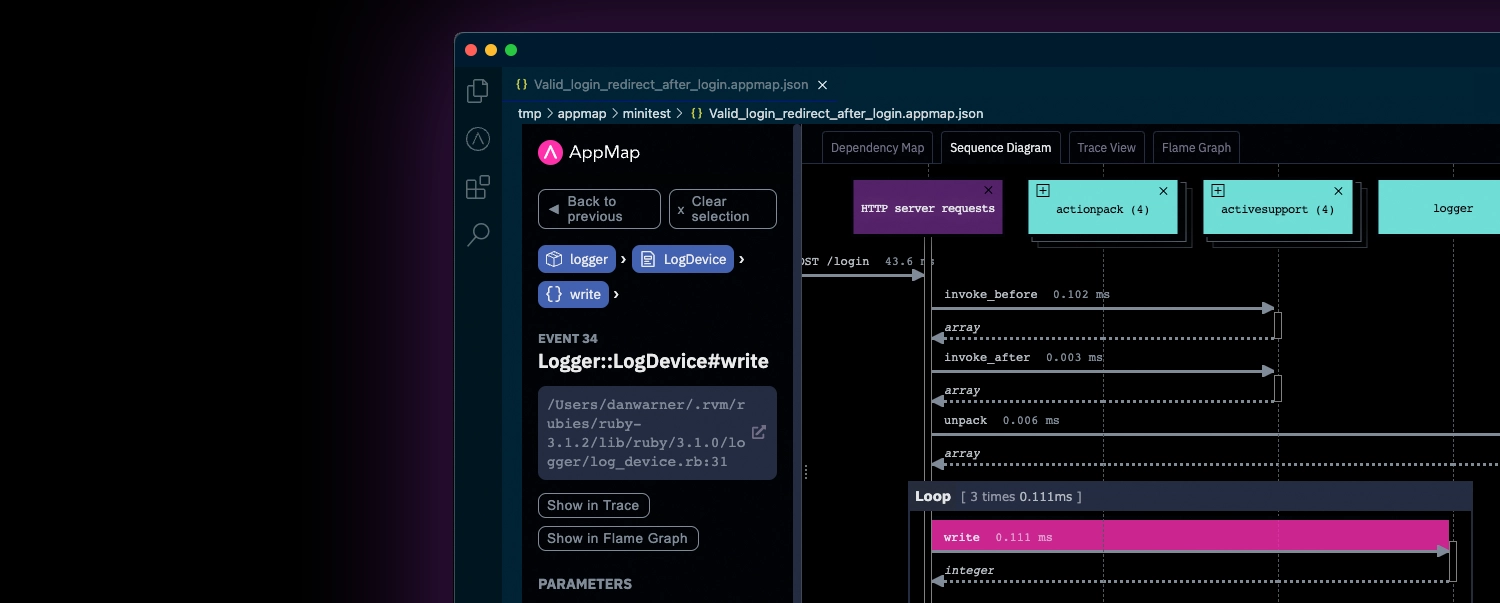Follow along on this tour of a sequence diagram, covering the following concepts:
- Lifeline: A vertical line that represents an object or component in the system. The lifeline shows the lifetime of the object/component and its existence over time.
- Object header: The rectangular box attached to the top of the lifeline that contains the name of the component (package, class, etc.) that the lifeline represents.
- Activation bar: A horizontal line that represents the duration of time when an object is performing an action or processing a message. It is shown as a solid line on top of the lifeline.
- Message: A horizontal arrow that represents the communication between objects or components. It is shown as a line with an arrowhead pointing from the sender to the receiver. Messages can be synchronous, asynchronous, or self-referential.
- Return message: A horizontal arrow with a dashed line that represents the return message from the receiver to the sender.
- Self-message: A message that is sent by an object to itself.
- Combined fragment: A diagram fragment representing a specific flow of control. It is shown as a box with a label that indicates the condition under which it is executed.
Posted 23 May 2023 by Kevin Gilpin
